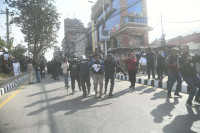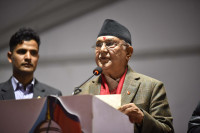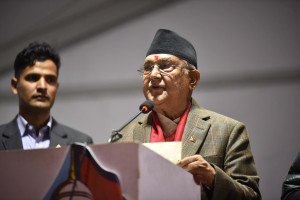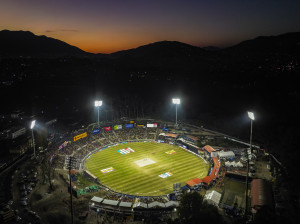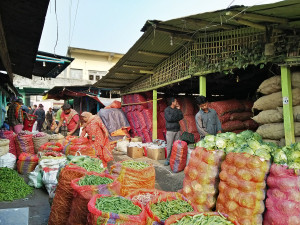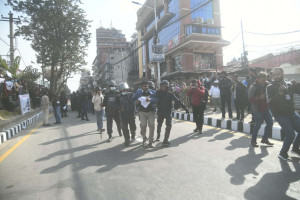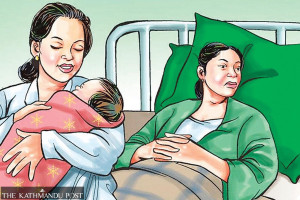Editorial
Winter air blues
It is a matter of time before cities are again shrouded in toxic haze—with citizens paying the price.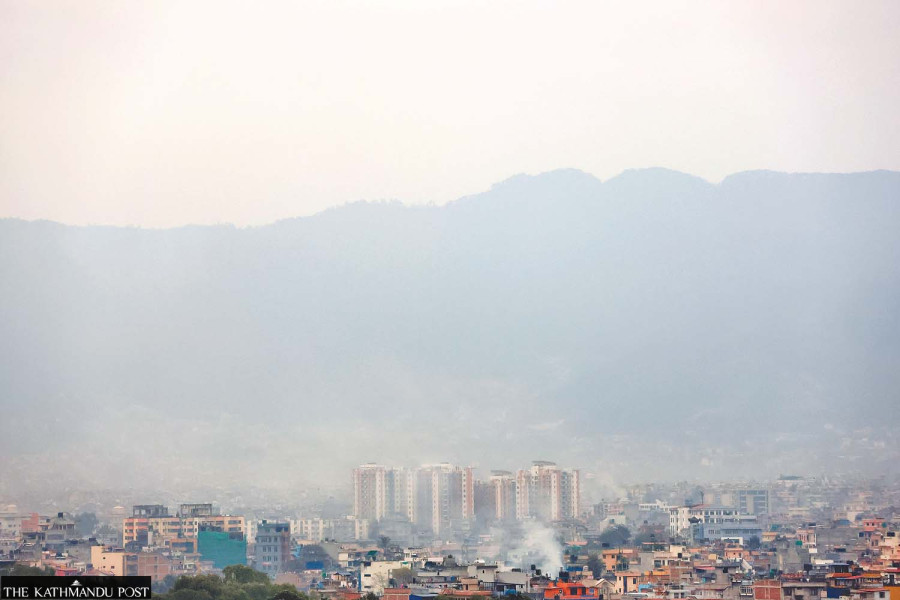
After days of devastating monsoon rains earlier this month, Nepal is currently enjoying clear skies and sunshine. Clear views of mountains heightened the festive mood. However, the fact that the air quality at our southern neighbour’s capital, New Delhi, recently degraded to the ‘very poor’ category, according to the Swiss group IQAir’s reading, is a cruel reminder of our own vulnerability to polluted air. Delhi’s poor air quality was partly a result of firecrackers used during Diwali. Yet that was not the only reason. If we don’t take preventive measures, it will only be a matter of time before Nepal’s major cities, just like New Delhi, are again shrouded in a toxic haze—with their citizens paying the price.
Kathmandu’s air quality usually begins depleting in November, with the rise in stubble burning practices across Nepal and India. According to a study, around three million tonnes of agricultural residue are burnt in our southern plains alone. As a result, the federal capital regularly tops the list of the world’s most polluted cities with severe air pollution levels exceeding the recommended PM2.5 levels of 200 micrograms per cubic metre (μg/m3). Kathmandu Valley’s PM2.5 levels reached 365 μg/m3 this April. Exacerbating the issue are other factors, including emissions from brick kilns, factories, vehicles, wildfires and construction activities. Open burning practices in our surroundings are also contributing to air pollution. As the winter season is mostly dry with little to no rainfall, it is also the time Nepalis struggle for fresh air.
Air pollution comes with a host of problems. A recent State of Global Air (SoGA) 2025 report paints an alarming picture: In 2023, pollution and domestic emissions killed 41,300 Nepalis. Worse, air pollution is now the leading cause of noncommunicable diseases globally, as it poses significant risks to the heart, brain, lungs and respiratory system, reproductive system, and skin. Particulate matter risks in Nepal also exceed the risks of tobacco and high blood pressure.
Given these risks, it would be prudent to declare air pollution a public health emergency and take urgent actions to mitigate it. Reducing transboundary emissions calls for a regional response, and its need cannot be overstated, but cutting air pollution at the source is just as vital to make Nepal’s air healthier. For instance, it is vehicular emissions that primarily make Kathmandu’s air toxic. As suggested by experts, switching to electric vehicles and making them more affordable is the best way to clean up the air. While there have been efforts from all government levels to reduce emissions by conducting emissions tests of fuel-powered vehicles, these efforts are far from effective. Not only do people forge green stickers to avoid the hassle, even the authorities let the vehicles that fail the tests continue operating. Such acts hinder the fight against air pollution.
Nepal could learn from best practices of other countries. Brazil, for instance, as highlighted by the SoGA report, has committed to aligning with the WHO air quality guidelines to enhance public health. Through its National Air Quality Policy, the country aims to establish timelines for reaching interim air quality targets. One solution for Nepal could be setting city-by-city targets with the help of local and ward levels. There is no magic bullet with which to clean our air overnight. It is rather a matter of doing the right things, at each layer of government and society, over a period of time.




 13.12°C Kathmandu
13.12°C Kathmandu


